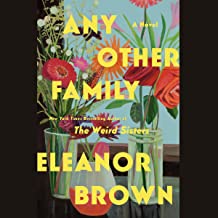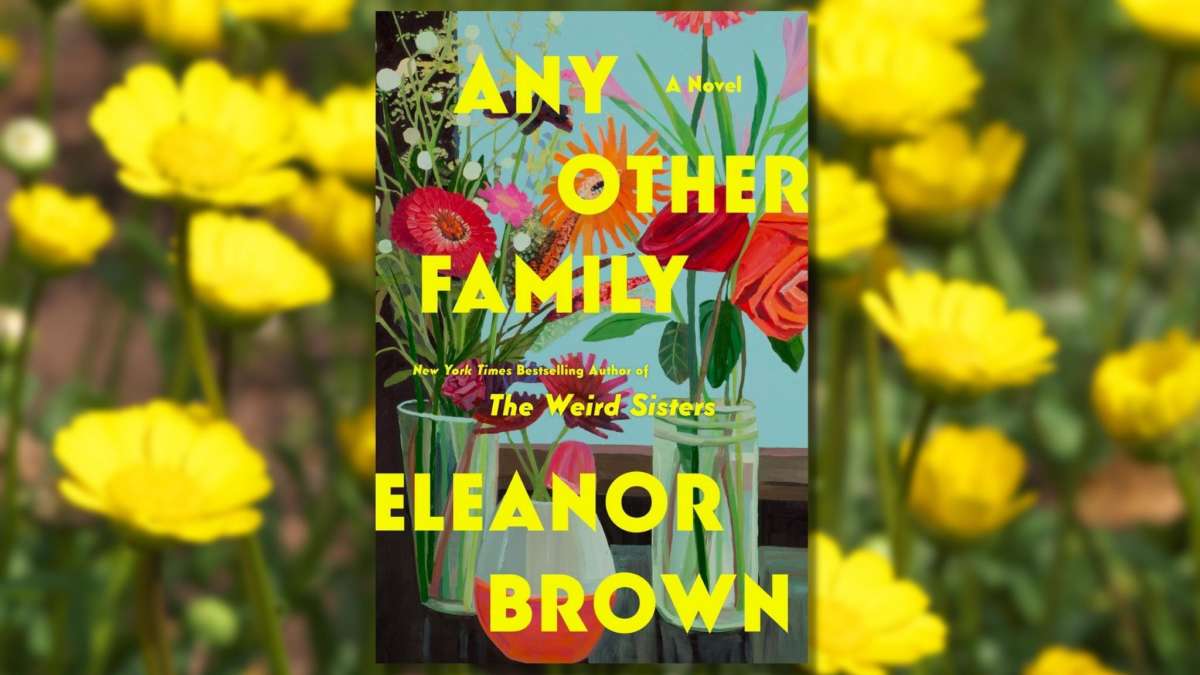Any Other Family by Eleanor Brown
Unconventional family stories are fun to read and give us an understanding of unfamiliar situations, allowing for the development of empathy. Eleanor Brown‘s Any Other Family (Putnam) is about open adoption, siblings and how their adoptive families chose to raise them together as one big family. Although the subject may be complex, this is an easy and engaging read. You may know I love an explanatory visual up front like a map or diagram and bonus … Eleanor Brown includes a simple family tree that can be referred to as you get to know her characters!
Any Other Family is a heartwarming story about three sets of parents that become an extended family when they adopt siblings and agree to maintain the biological relationships of their children to each other and the birth mother. While on a two-week family vacation to Aspen Colorado, they get a phone call from the children’s birth mother telling them she is pregnant again and she wants them to choose the new parents.
The three moms, Tabitha, Ginger and Elizabeth bring who they are and their own baggage into parenting, and the story is told by each of them in alternating views by chapter. Tabitha was an only child and lonely growing up; as a mom she is wound a bit tight. Ginger was not in control as a child so as an adult she keeps people at a distance, and Elizabeth suffered loss and recently went through unsuccessful fertility treatments so she is intense and full of emotion.
Any Other Family is about adoption, the responsibilities that come with parenting, and what makes a family. I enjoyed this unconventional family, the author’s use of humor and her engrossing storytelling; I highly recommend the book!
Q&A WITH ELEANOR BROWN
Q: Any Other Family is about three families that have adopted siblings and agreed to raise them in their separate households but as one big extended family. How did you come up with this idea for your book?
A: Four years ago, my husband and I unexpectedly (I like to say “accidentally”) adopted our son. It wasn’t something we were looking for, so we were quite unprepared, and I had a lot of questions. And as I talked to people about our family, many of them had questions too, especially about the relationship we have with our son’s birth family.
So I did what I always do when I don’t know the answers to questions – I made some people up and let them try to figure it out!
Q: Who did you talk to and how did you go about research for this book?
A: I talked to everybody! I’d done a lot of reading about adoption and gone through classes when we adopted our son, so I had something to draw on. But I also talked to all kinds of people touched by adoption — birth families, adult adoptees, parents who adopted internationally, through foster care, through private infant adoption, siblings of adoptees, social workers and therapists — everyone who would talk to me, I talked to!
Q: Tabitha, Ginger and Elizabeth are all very different types of mothers. Why do you think they each decided to be a part of this extended family?
A: All three women stumble into it, which is one of the things that strikes me as true about adoptive families.
I compare it to arranged marriage, in that there’s not a lot of adjustment or getting-to-know-you time. There’s a child and boom! everyone is family.
Q: Do you think the moms are giving up their autonomy in motherhood by agreeing to consider the opinions of the others?
A: Not at all. It takes a village.
Q: How did the moms change as parents during the course of the story and are they any different than parents of children that are not adopted?
A: I’m going to leave that to the reader to decide!
Q: Would you call the families’ choice to raise the children the way they are “team parenting”? (Or do you think it just seemed this way because they were all together on vacation and in each other’s space as opposed to living in their separate homes?) Why do you think we don’t see more of this?
A: The American ideal of bootstrapping and independence has, unfortunately, made its way into parenting, and Instagram hasn’t helped. We all think we have to do this alone and be perfect in it.
But I’m a better parent — a better person all around! — when I invite other perspectives and ideas in. I learn so much from my parent friends whenever we talk, and I wish we didn’t have to try to isolate ourselves and Do It Myself all the time. It’s unfair to everyone involved.
Q: Briana, the birth mother, although not the main focus of the book, has struggles that prevent her from having a motherly presence in the lives of her children. What has been the reaction from readers to how she was portrayed?
A: The biggest question I get about Brianna is if there are really women like her — who have multiple children but don’t parent them.
One reason I wrote the book was to dispel myths about adoption, or at least make people question them. And the myth about birth parents — birth mothers in particular — is that they’re all young, or mentally ill, or drug-addicted, or irresponsible.
And that’s not always the case. People have all kinds of reasons to decide not to parent, sometimes more than once. That’s all making a plan for adoption is — choosing not to parent. And I hope the book helps people be more forgiving and less judgmental about that.
Q: Based on your knowledge and experience, how often are family situations similar to the Any Other Family families?
A: Specifically different families raising biological siblings? More common than you’d think.
But really one of the messages of the book, I think (I hope!), is that family looks different for everyone.
One of my son’s friends (I’ll call him Matthew) has a “bonus” set of grandparents. Matthew’s dad was married previously, and his wife passed away. But the late wife’s parents, even though they have no recognized connection to Matthew, have a grandparent-like relationship with him.
I think that’s a great example of how whatever you think family means, it means something different to someone else.
Q: Your style of writing in Any Other Family is a perfect combination of emotional and intense storytelling along with humor. How do you balance the two?
A: Oh, thank you! I’ve found humor is a great way to break up the intensity and make everything feel more human.
I once interviewed Mary Kay Andrews and asked her something similar, and she said, “You have to limn the dark with the light,” which I love.
Q: What do you want people to walk away with understanding once they read your book?
A: Two things: first, that adoption might not look the way you think it looks – it has changed and is continuing to change as we learn more, especially from adult adoptees who are willing to share their stories. Second, that adoptive families look just like any other family!
Q: In this day and age, with Ancestry and 23 & Me, people are able to find their long-lost relatives. How do you feel about open adoptions and kids knowing their birth families from the get-go vs. having to make the decision to look for blood relatives as an adult?
Because now we know that when it’s possible and healthy — and it’s not always either of those things — open adoption can be really beneficial to the person who has been adopted, I’m a big fan.
But many of the people who are now discovering biological relatives through DNA services were in situations where adoptions were closed, just as a matter of course.
I’m really glad technology has given us this opportunity, I’m just sorry that for so long we, as a culture, didn’t give people who were adopted the chance to choose the kind of relationships they want to have with their birth families.
Q: What is your writing process? Do you think through and outline each family’s story from beginning to end and then integrate them or do you write in the order of how everything appears in the book, with points of view alternating between chapters?
A: This book, because it’s so complex (nine main characters!), I planned everything out, with the cunning use of colored Post-it notes! I outlined the whole family’s story as it appears in the book, and then cut and moved around a lot during editing.
Q: Which mom was your favorite to write and who could you relate to the most?
A: My favorite to write was Elizabeth, because she’s so funny and has so much relatable emotion. And I’m a little bit of all three moms, but I definitely have a lot of Tabitha in me – I am much more of the Pinterest mom than I’d like to admit!
Q: What have you read lately that you recommend?
A: This is a dangerous question to ask me! We could be here all day. I’ll keep it to a few.
The Force of Such Beauty, by Barbara Bourland
The Displacements, by Bruce Holsinger
The Foundling, by Ann Leary
Also, if you enjoyed Any Other Family, I have to recommend The Myth of Surrender by my friend Kelly O’Connor McNees, which is about maternity homes in the 1960s when unplanned pregnancy and adoption looked very, very different than they do now.
Q: Do you know what your next project is yet?
A: Maybe? I have two drafts and I’m on a sabbatical while I think about which one I want to pursue.
But I say I write about people who lose their way and find their families, and I can promise it’ll be about that in one way or another!
This story appears through BookTrib’s partnership with BookNationByJen. It first appeared here.
About Eleanor Brown:
Eleanor Brown is the New York Times and #1 international bestselling author of three novels: Any Other Family, The Weird Sisters and The Light of Paris. Her writing has been hailed by People magazine as “delightful” and “creative and original” by Library Journal. In addition to her fiction writing, Eleanor edited the anthology A Paris All Your Own. Her book reviews, interviews and essays have been featured in publications including The Washington Post, The Guardian and Publishers Weekly. Born and raised in the Washington, D.C. area, Eleanor lives with her family in Colorado.




